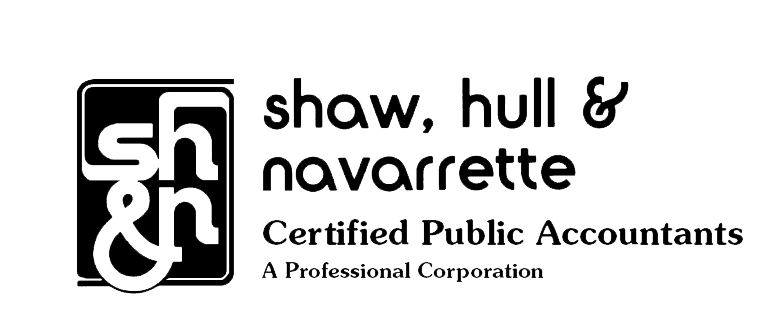Today we highlight a few of the tax changes that apply in 2018 to businesses.
Corporate tax rate reduced. For tax years beginning after Dec. 31, 2017, the corporate tax rate is a flat 21% rate.
Dividends received deduction percentages reduced. For tax years beginning after Dec. 31, 2017, the 80% dividends received deduction is reduced to 65%, and the 70% dividends received deduction is reduced to 50%.
AMT repealed. For tax years beginning after Dec. 31, 2017, the corporate AMT is repealed. For tax years beginning after 2017 and before 2022, the AMT credit is refundable in an amount equal to 50% (100% for tax years beginning in 2021) of the excess of the minimum tax credit for the tax year over the amount of the credit allowable for the year against regular tax liability.
Expensing rules liberalized. For property placed in service in tax years beginning after Dec. 31, 2017, the maximum amount a taxpayer may expense under using section 179 is increased to $1 million, and the phase-out threshold amount is increased to $2.5 million.
Property eligible for expensing is expanded. For property placed in service in tax years beginning after Dec. 31, 2017, the definition of section 179 property is expanded to include certain depreciable tangible personal property used predominantly to furnish lodging or in connection with furnishing lodging. The definition of qualified real property eligible for section 179 expensing also is expanded to include the following improvements to nonresidential real property after the date such property was first placed in service: roofs; heating, ventilation, and air-conditioning property; fire protection and alarm systems; and security systems.
15-year writeoff for qualified improvement property. For property placed in service after Dec. 31, 2017, the separate definitions of qualified leasehold improvement, qualified restaurant, and qualified retail improvement property eligible for a 15-year writeoff, are replaced with new category called qualified improvement property, which is depreciated over 15 years via straight line (or 20 years via the Alternative Depreciation System (ADS)). Qualified improvement property is any improvement to an interior portion of a building that is nonresidential real property if the improvement is placed in service after the date the building was first placed in service, except for any improvement for which the expenditure is attributable to (1) enlargement of the building, (2) any elevator or escalator, or (3) the internal structural framework of the building.
Shortened recovery period for farming equipment. For property placed in service after Dec. 31, 2017, in tax years ending after that date, the cost recovery period is shortened from seven to five years for any machinery or equipment (other than any grain bin, cotton ginning asset, fence, or other land improvement) used in a farming business, the original use of which commences with the taxpayer. In addition, the required use of 150% declining balance depreciation for property used in a farming business (i.e., for 3-, 5-, 7-, and 10-year property) is repealed. The 150% declining balance method continues to apply to any 15-year or 20-year property used in the farming business to which the straight-line method does not apply, and to property for which the taxpayer elects the use of the 150% declining balance method.
Limits on deduction for business interest. For tax years beginning after Dec. 31, 2017, every business, regardless of its form, is generally subject to a disallowance of a deduction for net interest expense in excess of 30% of the business’s adjusted taxable income. The net interest expense disallowance is determined at the tax filer level. However, a special rule applies to pass-through entitles, which requires the determination to be made at the entity level (e.g., at the partnership level instead of the partner level).
For tax years beginning after Dec. 31, 2017 and before Jan. 1, 2022, adjusted taxable income of a business is computed without regard to various deductions, including the deductions for depreciation, amortization, or depletion and without the former Code Sec. 199 deduction (which is repealed effective Dec. 31, 2017).
The amount of any business interest not allowed as a deduction for any taxable year is treated as business interest paid or accrued in the succeeding tax year. Business interest may be carried forward indefinitely, subject to certain restrictions applicable to partnerships.
An exemption from these rules applies for taxpayers (other than tax shelters) with average annual gross receipts for the three-tax year period ending with the prior tax year that do not exceed $25 million. The business-interest-limit provision does not apply to certain regulated public utilities and electric cooperatives. Real property trades or businesses can elect out of the provision if they use ADS to depreciate applicable real property used in a trade or business. Farming businesses can also elect out if they use ADS to depreciate any property used in the farming business with a recovery period of ten years or more. An exception from the limitation on the business interest deduction is also provided for floor plan financing (i.e., financing for the acquisition of motor vehicles, boats or farm machinery for sale or lease and secured by such inventory).
Special rules apply to partnerships and to the carryforward of disallowed partnership interest.
NOL deduction modified. For NOLs arising in tax years ending after Dec. 31, 2017, the two-year carryback and the special carryback provisions generally are repealed.
For losses arising in tax years beginning after Dec. 31, 2017, the NOL deduction is limited to 80% of taxable income (determined without regard to the NOL deduction, itself). Carryovers to other years are adjusted to take account of this limitation, and, except as provided below, NOLs can be carried forward indefinitely.
A two-year carryback applies in the case of certain losses incurred in the trade or business of farming. Additionally, NOLs of property and casualty insurance companies can be carried back two years and carried over 20 years to offset 100% of taxable income in such years.
If you have questions on how the new tax law impacts your business, please Contact Us.

